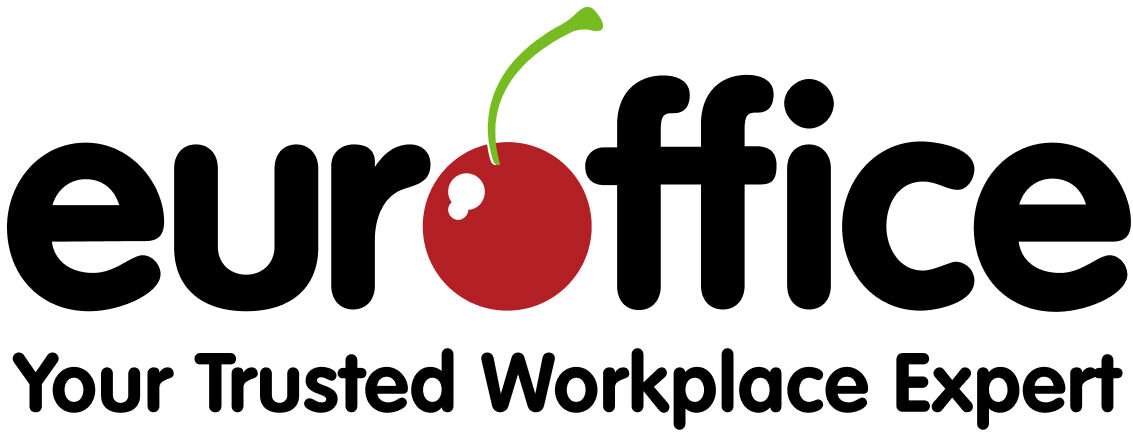With offices becoming increasingly focused on technology, employees rarely have time to take a step away from their computer screens. As a result of workplace pressures, such as larger workloads and competitive markets, stress and anxiety is increasing. Thankfully, there are ways to relieve these stresses whilst at work, and the growing popularity of mindfulness may well hold the answer for many professionals.
Practiced frequently amongst Buddhists, mindfulness is a form of meditation which involves being fully aware, present and focused on the moment. It is utilised to develop self-knowledge and wisdom, training the mind and inducing a mode of increased consciousness. By taking just 20 minutes out of your daily schedule to meditate, you can relax and increase your productivity and energy levels. Even better, you don’t have to get up any earlier!
How to practise meditation in the workplace
It can seem awkward to meditate in the workplace, but it doesn’t have to be. We have put together some top tips to get you started and recommended some apps to help you practise.
1. Find a consistent time
You don’t need any fancy equipment, just time and space to be mindful. Consistency is key, so try out a few different times of the day to find out what works for you and then stick to that time every day. You should strive for at least 20 minutes.
Meditating when you wake up can help set the tone for your entire day. Lunch time meditation can help slow down your thoughts and concentrate on your actions for the afternoon. Post-work meditation can help ease the transition between your work life and home life. Meditating before you leave work at the end of the day can feel like a reset button, helping you to take the edge off your commute home.
2. Find a quiet space
You will need to ensure you’re free from any interruptions. Book a quiet meeting room for half an hour or take some time outside (weather permitting). The fresh air can help increase relaxation and get you in the zone. Mindfulness meditation can be practised either standing or sitting.
3. Don’t judge yourself
Be kind to your wandering mind, let your thoughts crop up but recognise this wandering and gently bring your concentration back to your meditation.
 Rescue Remedy is a leading manufacturer of products that help deal with stress relief. They sponsor The Stress Management Society, the founder of which, Neil Shah, says that mindfulness “encourages better personal and business relationships, and allows people to be more creative, focused and productive. Physically moving to a quieter space can help you to achieve this state, stepping into a stairwell, car park, garden or even just a different room can help”.
Rescue Remedy is a leading manufacturer of products that help deal with stress relief. They sponsor The Stress Management Society, the founder of which, Neil Shah, says that mindfulness “encourages better personal and business relationships, and allows people to be more creative, focused and productive. Physically moving to a quieter space can help you to achieve this state, stepping into a stairwell, car park, garden or even just a different room can help”.
[sc name=”clear_both”]
Top 3 meditation apps for 2017
One way to learn more about how to introduce mindfulness meditation into your routine, as well as get help to practise on a regular basis is to download one of the numerous apps available on iOS and Android. To help you out, we have put together a list containing our top three favourite apps currently on the market.
1. Buddhify – iOS and Android
 Helping people around the world reduce stress and get a better night’s sleep, this app is perfect for a busy work lifestyle. Featuring timeslots and different moods so that you can apply what you are doing. Buddhify is a fresh approach to modern mindfulness.
Helping people around the world reduce stress and get a better night’s sleep, this app is perfect for a busy work lifestyle. Featuring timeslots and different moods so that you can apply what you are doing. Buddhify is a fresh approach to modern mindfulness.
[sc name=”clear_both”]
Rohan Gunatillake, Creative Director says: “The ultimate benefit of meditation is learning about the patterns and habits of your mind so that they hold less power over you and your sense of happiness and freedom. The Buddhify approach is to let all parts of the day be opportunities for meditation rather than think of meditation solely as formal meditation – sitting with your eyes closed in a quiet space”.
2. The Mindfulness App – iOS and Android
![]() The Mindfulness App emphasises that mindfulness is for everyone, improving mental health and overall wellbeing. Includes timed sessions and a reminder, and allows users to personalise their meditations and keep track of their journey with statistics.
The Mindfulness App emphasises that mindfulness is for everyone, improving mental health and overall wellbeing. Includes timed sessions and a reminder, and allows users to personalise their meditations and keep track of their journey with statistics.
[sc name=”clear_both”]
Magnus Fridh, the Co-founder said: “Mindfulness is about being present in life itself and to not to be absorbed in your wandering mind… To learn this, you need to practice and make your mind familiar with a new habit. Just like going to a gym you need to strengthen a new muscle; the muscle of attention… you´ll need some time set aside every week, enthusiasm and a great portion of patience. Anyone can do it!”
3. Calm – iOS and Android
 Calm features 7-day programmes that can be focussed on anxiety and stress. Perfect for beginners, intermediate and advanced users, Calm allows users to choose the length of each meditation session. Bring more clarity, joy and peace to your working life with breathing programmes and sleep stories, featuring Stephen Fry!
Calm features 7-day programmes that can be focussed on anxiety and stress. Perfect for beginners, intermediate and advanced users, Calm allows users to choose the length of each meditation session. Bring more clarity, joy and peace to your working life with breathing programmes and sleep stories, featuring Stephen Fry!
[sc name=”clear_both”]
Layna Smith, Head of customer experience said: “Our mission is to make the world happier and healthier through the superpower of Calm. The Calm mobile app teaches the basics of mindfulness and meditation, with additional features to bring more clarity, joy and peace to your daily life. Along with guided meditations, you’ll also find music, breathing programs, and our Sleep Stories collection in the Calm mobile app.”
Creating the right environment
 The workplace environment needs to be a positive place to be, and employees need to be supported. Communication is vital in the office and this means employers should be open about the pressures of the business and dispelling any negative behaviour that has an impact on morale. Open plan office spaces is a big focus for 2017 and creating this kind of environment can help facilitate the channels of communication and improve the atmosphere of the workplace.
The workplace environment needs to be a positive place to be, and employees need to be supported. Communication is vital in the office and this means employers should be open about the pressures of the business and dispelling any negative behaviour that has an impact on morale. Open plan office spaces is a big focus for 2017 and creating this kind of environment can help facilitate the channels of communication and improve the atmosphere of the workplace.
With regards to your personal working area, standing desks offer many benefits, not only for your health but also your energy and creativity. The flexibility of height adjustable desks allow you to get out of the confinement of the office chair, making you feel more productive and healthier. In offices where there are lengthy periods of sitting, standing mediation can be a good way to achieve mindfulness. It can be used to calm you down after a stressful day at work, or wake you up if you’re feeling sleepy mid-morning. According to Buddha Weekly, “Some teachers and gurus teach standing mindfulness meditation in addition to sitting practice. In some traditions standing meditation is considered superior for aligning “the meridians” and chakras and for flow of energy.”
Workplace meditation businesses
The Labour Force Survey estimates that in 2015/16 stress accounted for 37% of all work related ill health cases and 45% of all working days lost due to ill health. Engaging in mindfulness meditation in the workplace allows employees to become better engaged and can help reduce the amount of working days lost due to stress, anxiety and depression.
If you want to introduce workplace meditation at your office but don’t know where to start, there are several companies who can help you get set up. We spoke to some of them to get tips about how you can get started, and what benefits you can hope to see.
 Chris James, founder of Chris James Mind and Body gave us some basic instructions for how to begin. He said, “Sit on the floor or in a chair in a dimly lit room. Leaden your eyes, and visualise the outline of your body and slowly trace it in your head. Keep in mind the amount of pressure you’re feeling against the chair or the ground and be mindful of where there’s more pressure and where there’s less.
Chris James, founder of Chris James Mind and Body gave us some basic instructions for how to begin. He said, “Sit on the floor or in a chair in a dimly lit room. Leaden your eyes, and visualise the outline of your body and slowly trace it in your head. Keep in mind the amount of pressure you’re feeling against the chair or the ground and be mindful of where there’s more pressure and where there’s less.
Start with your head, then slowly move down to your shoulder, arm, and leg. Work down to your feet and then back up the other side of your body. Take about five minutes for this exercise. After this you focus on your breath, particularly the out breath. Count the number of seconds on the inhalation and the number of seconds on the exhalation. Start to lengthen the number of seconds on the exhalation.”
[sc name=”clear_both”]
 Hayley Nester from Click for Therapy explained some of the benefits of mindfulness within a work context, “Mindfulness at work does seem counter-intuitive. By stopping or slowing down, you can become more efficient, productive, happy, resilient and healthy at work… Plenty of evidence suggests that actively practicing gratitude makes you feel better and has a positive impact on your creativity, health, working relationships, and quality of work.”.
Hayley Nester from Click for Therapy explained some of the benefits of mindfulness within a work context, “Mindfulness at work does seem counter-intuitive. By stopping or slowing down, you can become more efficient, productive, happy, resilient and healthy at work… Plenty of evidence suggests that actively practicing gratitude makes you feel better and has a positive impact on your creativity, health, working relationships, and quality of work.”.
[sc name=”clear_both”]
 Dominica Roszko, founder of Vegerasta, talked to us about how easy it can be to include mindfulness in your day, saying “Wherever we are, we have the ability to be present. When sitting in your room on the meditation cushion or sitting outside surrounded by nature, we can be present with our breath… Meditation is also a great stress reliever… simply because you are present in a moment and don’t think about the future or about the past troubles”.
Dominica Roszko, founder of Vegerasta, talked to us about how easy it can be to include mindfulness in your day, saying “Wherever we are, we have the ability to be present. When sitting in your room on the meditation cushion or sitting outside surrounded by nature, we can be present with our breath… Meditation is also a great stress reliever… simply because you are present in a moment and don’t think about the future or about the past troubles”.
[sc name=”clear_both”]
 Lucy Boulton founder of Nanny agency Lunachild Collective told us about her personal experiences with meditation, saying, “I got into meditation around 5 years ago after developing an interest in all things spiritual and wellbeing. When my Mum started to teach yoga I learned more about how to meditate and all of the benefits and started to really feel the benefits when I would practise daily… The benefits for me have been a clearer mind, ability to focus more on my projects especially if I am feeling a mid-day lull and I find it also helps me to be more creative which is needed when running a start-up company.”.
Lucy Boulton founder of Nanny agency Lunachild Collective told us about her personal experiences with meditation, saying, “I got into meditation around 5 years ago after developing an interest in all things spiritual and wellbeing. When my Mum started to teach yoga I learned more about how to meditate and all of the benefits and started to really feel the benefits when I would practise daily… The benefits for me have been a clearer mind, ability to focus more on my projects especially if I am feeling a mid-day lull and I find it also helps me to be more creative which is needed when running a start-up company.”.
If you’re interested in workplace meditation, why not try introducing it to your office to see the benefit it has on your team! Let us know how you get on – tag us in your social media snaps with #EurofficeWellness



